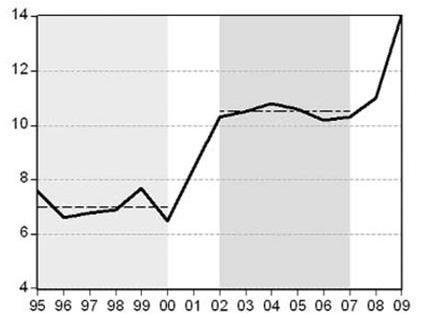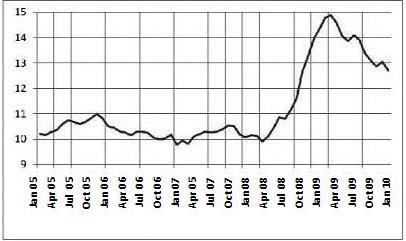We are finally back on the real agenda
The high level of unemployment in Turkey was one of the main issues Kemal Kılıçdaroğlu, Chairman of the Republican People's Party (CHP), highlighted in the historic Congress. This problem should in fact be at the top of the country's agenda. It appears that from now on it will become one of the key issues of debate on the political agenda, as well as it has to be.
Today let as take a look at the recent developments in unemployment once again and try to emphasize some important points. The first point is a clear fact: Unemployment rate in Turkey is currently higher than ever before. In the 1995-2000 period the rate varied between 6.5 and 7.7 percent. With the 2001 crisis the rate jumped up to the upper step: 2002-2007 average was 10.5 percent. What is more in this period unemployment rate did not change significantly and varied within the 10.2-10.8 percent interval. Along with the global crisis unemployment rate in Turkey increased further and reached 14 percent by 2009 (Graph 1).
In the recent months unemployment rate started to decrease with the along with the slight upwards movement in production. The latest available for February indicates that unemployment rate is 14.4 percent indicating a 1.7 points of month-on-month decrease. This obviously is a favorable development. However one should not forget that the rate stood at 11.9 percent in February 2008. To out it differently, unemployment rate is 2.5 points higher than that in February 2010. To be able to have a clearer picture we have to examine the figures net of seasonal effects issued by TURKSTAT. As seen in Figure 2, despite the recent recovery, unemployment rate is substantially higher compared to the pre-crisis period. This is the second point to highlight.
Third, labor force participation rate (LFP) is quite low. This stems particularly from the extremely low level of female labor force participation. If the LTP, the ratio of the population in the working age and willing to work to the total population in the working age, had been close to that in "normal" economies, unemployment rate in Turkey would have been much higher. The calculation is quite simple: male and female LFP rates are 70.5 percent and 26 percent, respectively. Therefore, overall LFP ratio in Turkey is 47.9 percent. If the LFP rate had been 55 percent, for instance, unemployment rate would have stood at 25 percent.
This is not a virtual calculation. It is argued that compared to developed countries, one of the biggest advantages of Turkey is the young population. For instance, EU countries are faced with the problem of aging and thus the working age population is decreasing while working age population in Turkey grows. Since labor force is a production factor, the mentioned phenomenon is actually an advantage for Turkey. But there are two preconditions to seize the advantage: first, those in the working age must be willing to work and thus to participate in the labor force. Second, to be able to contribute to the production, labor force must be able to find a job. Therefore, if the first precondition holds, that is if female LFP increases, we can witness a rise in the unemployment rate. Otherwise, Turkey does not have a significant advantage against developed countries.
Fourth, we can claim that even if agricultural employment decreases substantially, agricultural production will not decrease since only a part of those working in the agricultural sector are recorded in the employment data. We can conclude that as the employment outlook turns positive, they will be willing to shift from the agricultural sector to other sectors. To put it differently, generation of new jobs will not cause a proportional decrease in the unemployment rate. Those who are recorded in agricultural employment will shift to new generated jobs in other sectors. At this point I want to reminf that in 2009 non-agricultural unemployment rate stood at 17.4 percent, 3.4 points higher than the overall unemployment rate given above.
The points I have stressed are in fact "rough". They reveal that unemployment is a bigger problem than it seems to be. Of course, the strategies to fight with unemployment have to go beyond the above facts. The circumstances in the labor market in particular must be analyzed. These issues will occupy this column for a long time.

Figure 1: Change in the unemployment rate (%, 1995-2009)

Figure 2: Change in the unemployment rate, net of inflation (%, 2005 January - 2010 February)
This commentary was published in Radikal daily on 24.05.2010




